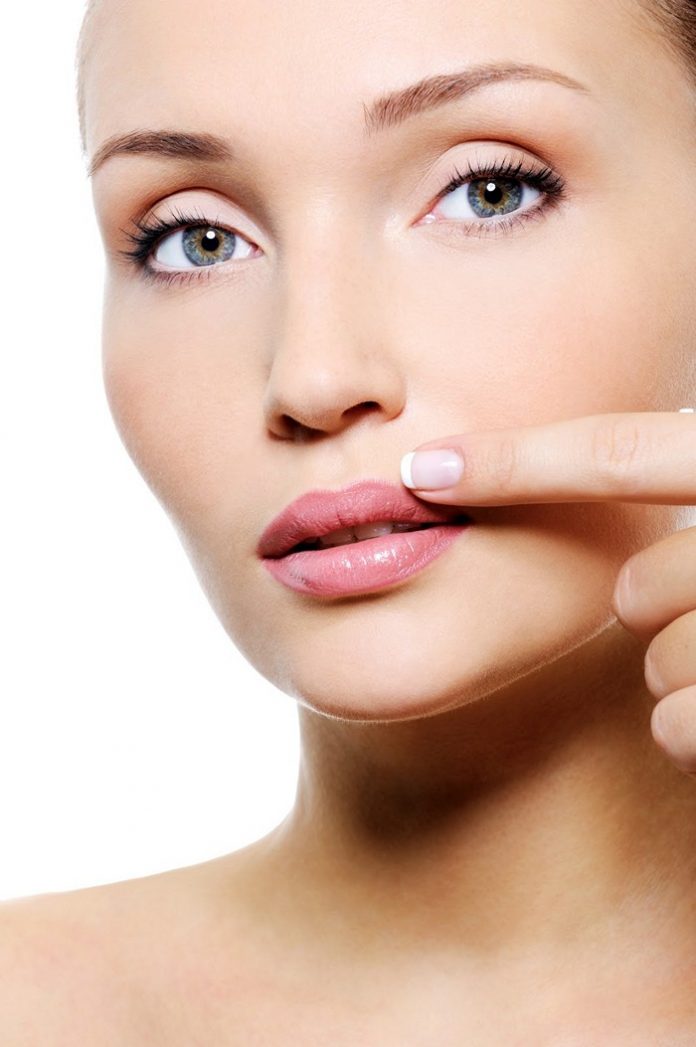Clear skin is one of those forever goals, but breakouts are inevitable. Sure, some pros may say that one way to treat a blemish is to let your skin breathe and go makeup free — but that’s not always an option. There’s a reason why concealer exists after all, right? Learning how to cover up breakouts with makeup is tricky enough on smooth skin, but try navigating a huge, red, irritated pimple — not the easiest thing to do. With the right tools, a little patience and some good advice, you can both conceal and treat a breakout with ease.
Be smart about skin care: What you do under you makeup will affect how well your base wears and how visible your blemish will be. Some skin care ingredients, particularly those used to treat breakouts, may not play nice with your makeup. It may be a bit of trial and error, but the best place to start is with a thin layer of whatever skin care product you’re using to bring down your blemish.
You’ll also want to avoid any treatment serums, moisturizers or primers that are oil-based or contain oils. These might actually break down the makeup quickly. Stick with oil-free formulas, which in many cases is better for acne-prone skin anyway. Go heavier with your breakout treatments at night, that way by morning the inflammation will hopefully be reduced, and makeup will cover better. Make sure you moisturize really well, even the pimple. It’s producing oil because it’s probably craving moisture, something that only water can provide.
Layer lightly: When skin isn’t cooperating, you may be tempted to just coat your entire face in foundation, but that may cause your coverage efforts to look more obvious. Instead, only conceal the area that needs the coverage. The best thing to do with a pimple is to apply the least amount of makeup to it. Use your foundation and see if that covers it. If not, that’s when you go back over the spot with a concealer.
Concealer will give you more coverage, but only apply it to areas where you need it. And although you don’t want to do too many layers on top of your blemish, a thin veil of primer beforehand may actually help even out the texture differences a pimple creates.
Matte formulas are best for breakout-prone skin.
Keep it clean: It may sound obvious, but you want to keep breakouts free from further irritation. So using your fingers to apply makeup should be avoided. Also, don’t try to massage the area or pop the pimple. This will only cause it to get more inflamed and bigger.
Keep the area as sanitary as possible by using a freshly cleaned brush — not one you have been using for the past two weeks or not even the tip of a makeup sponge. You want something that is completely clean so that you’re not just spreading bacteria around and causing more pimples.
Avoid caking: When applying a translucent powder to set your makeup, use a small fluffy eyeshadow brush to dust that spot where the pimple is. Throughout the day, avoid touch-ups as much as possible. Carry blotting sheets to soak up any excess oil. If you absolutely have to powder, do it sparingly, no more than two to three times a day. The key for this is using the least amount of product.
Only apply what you need and build the coverage only on top of the pimple and diffuse out the edges to blend into the rest of your skin. Cakey-ness only happens when there is too much powder, so blotting sheets should be your saving grace. Just remember to place and lift [the blotter] and don’t rub the pimple.

















